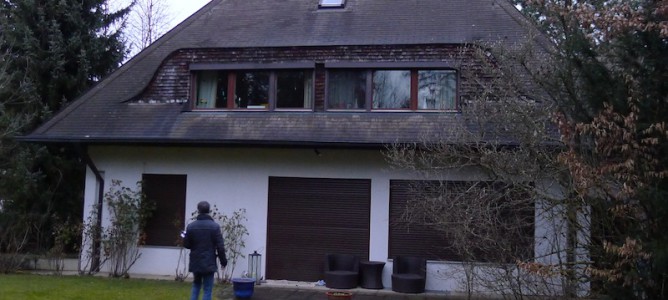By law, a seller will generally have to notify a potential buyer of the presence of asbestos in an object. In practice, however, I find again and again that my clients receive either no response or misinformation from a seller despite having enquired – be it due to lack of knowing, or lack of candidness. This is especially true when it comes to renovating objects from the 50s, 60s, and 70s.
The name asbestos originates from Greek, roughly translating to “inextinguishable.” It was once considered to be a magic bullet of sorts in the construction industry, especially in the period from 1960 to 1980: long-lasting, versatile, and above all else cheap. In Germany, it has been prohibited to manufacture or work with asbestos since 1993. However, one does still find it in an array of settings. Experts estimate that asbestos continues to be present in ca. 3000 to 5000 products: from roofing, facades, window ledges, pipes, and even ventilation ducts to floor adhesives, paint, and putties.
To be fair, one must note that asbestos is more or less innocuous to humans when “at rest.” The fine fibers it contains are only released in processes like sawing, drilling, or tearing. That means it’s important to exercise caution when purchasing or renovating homes and apartments built during this period.
Only an expert with access to sample material will be able to determine whether your purchase object or living spaces are contaminated. While this may represent an additional investment for you at first, you will indeed save yourself a great deal of trouble and money if test results come out positive – for renovating becomes much more labor intensive and costly when asbestos is involved due to the special requirements regarding work safety, disposal, hygiene, etc.
If you have questions on this subject or are looking for asbestos expert, please feel free to contact me at any time.

